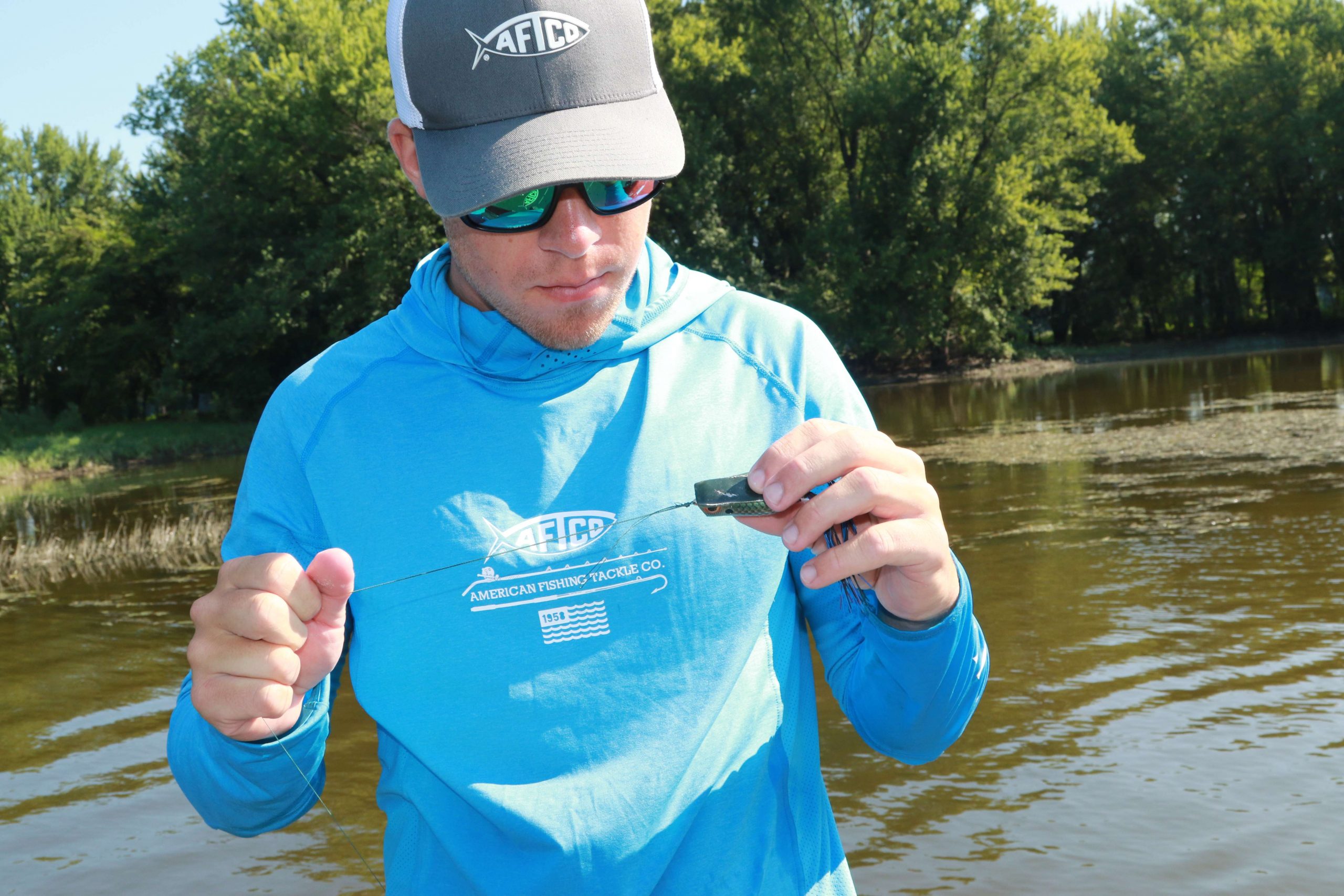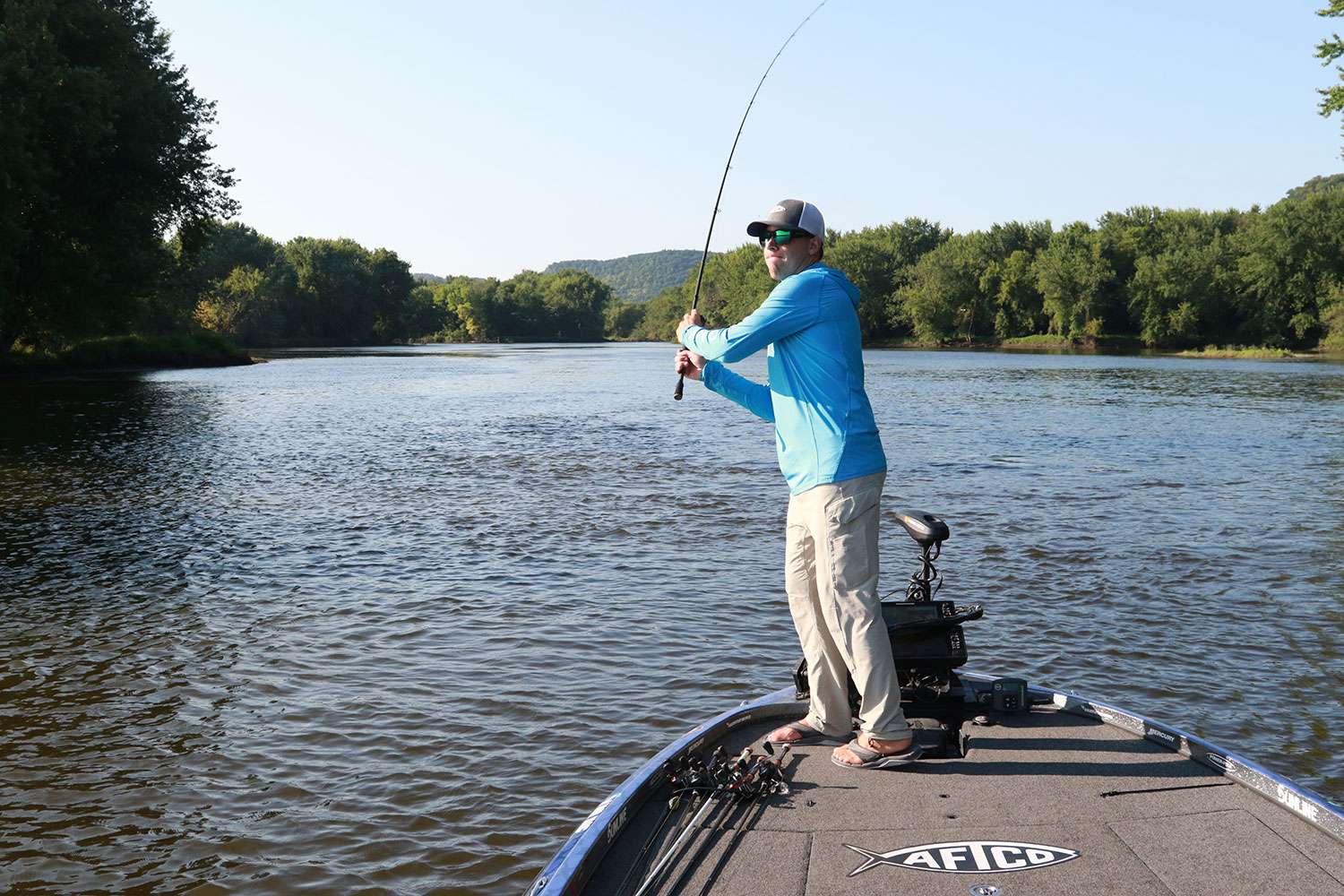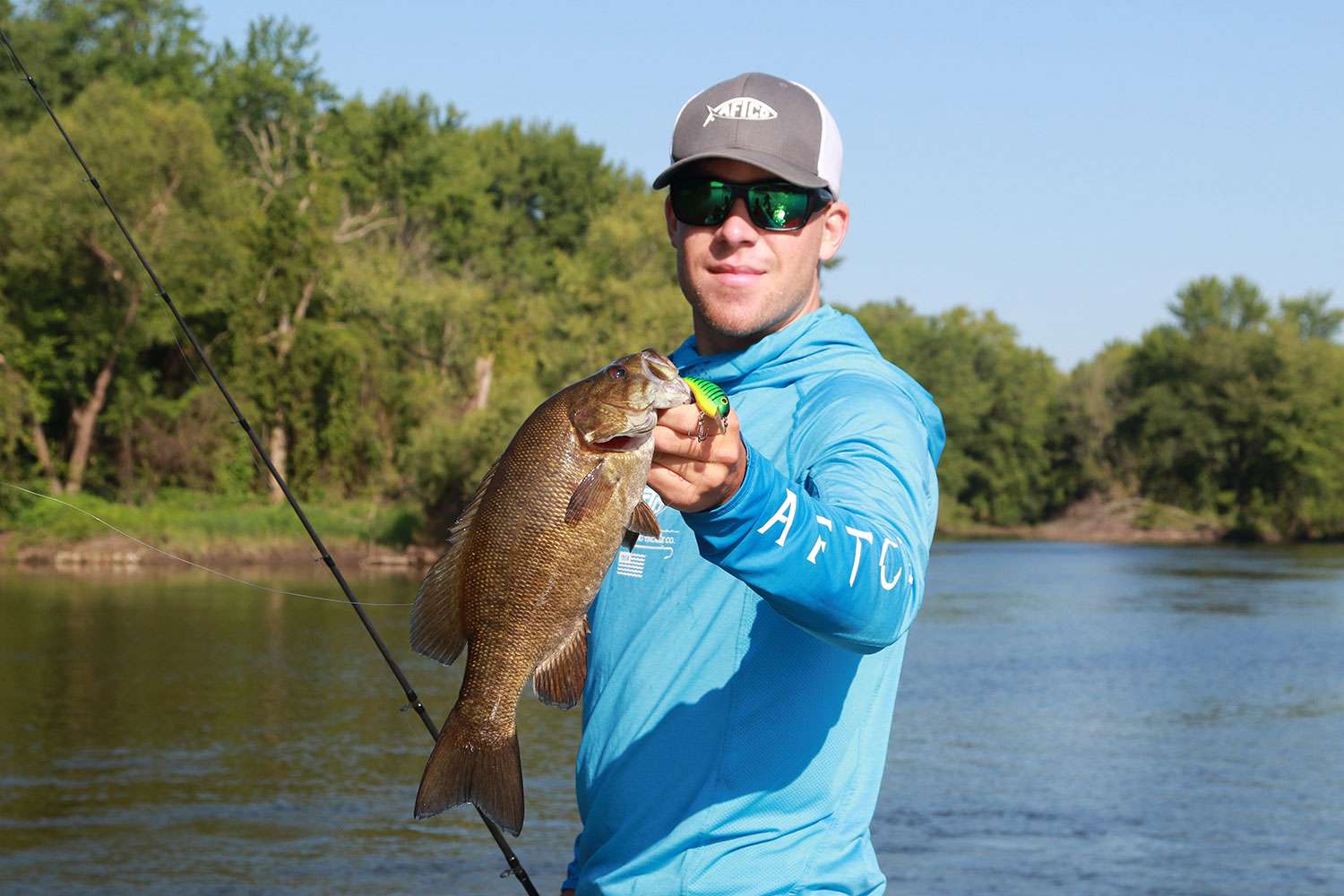
Spend a few minutes discussing Garrett Paquette’s career path and you might think you’re conversing with an actuarial accountant. For him, it’s all about the probability, both in terms of knowing what fish want as well as his personal preferences.
After enjoying a strong 2019 rookie season, the 24-year-old from Canton, Mich., has already established himself as legit competitor — a truth made possible by his disciplined adherence to a mathematical approach.
He did his homework
Following up on an idea from his engineer father, Phillip, Paquette studied five years of B.A.S.S. and FLW Tour events and entered the key data into an Excel spreadsheet to analyze the trends. He could’ve gone deeper into the history, but Paquette equated timeliness with relevance.
“I thought that the last five to seven years was what I needed to study just because of the technology changes,” he said. “In the 1970s and 80s everybody was throwing spinnerbaits on the bank. Today, it’s a little different with the modern fish finders, GPS and all of that.”
Evaluating what produced for the Top 10 anglers at each event, Paquette established general summaries such as soft plastic baits, skirted baits, bottom-dragging baits, ledge-fishing baits and sight-fishing baits. He then broke down those categories for specific insights.
“I might have a crankbait as being 25 percent of a Top 10, but then it may be a squarebill is 10 percent, a deep crank is 8 percent,” Paquette said. “So, I have general bait categories, but then we’ve broken it down into what specific baits produced for the tournament’s Top 10.”
The results opened his eyes to historical results, as well as future expectations.
“For example, everyone likes to throw a swimbait, but if you look at the numbers of how many times a swimbait has made the Top 10, I think as far as one single bait, it’s the highest ranking,” Paquette said. “That kind of caught me off guard and that might have been a part of my game that was lacking at the time. So I went out and tried to learn the intricacies of fishing a swimbait and put it into my game more and more.”

Paquette’s statistical studies have also revealed that, despite the importance of an open-minded approach, dodging the main deal means you’re not competitive. Two big ones: Ledge-fishing events and sight-fishing events.
“In both of those scenarios, if you can’t (ledge fish or sight fish), you have no prayer of doing well,” he said. “In a flipping tournament, you may be able to get by doing something else, but in a ledge-fishing or sight-fishing scenario, you’re not surviving by fishing your strength.”
Even more so than his swimbait game, Paquette knew that national level competition would require him to sharpen his sight-fishing skills. As he notes, the Michigan largemouth spawn (the most relevant to sight fishing) lasts so briefly, he never had much opportunity to practice.
“The first Elite tournament off the bat (St. Johns River) was my worst tournament; it was a spawn tournament in Florida,” Paquette said. “It’s tough, because I have to travel so far to do it, but I know that if I want to be consistent and have a chance at winning Angler of the Year, that’s a part I have to put into my game.”
Details matter
Keenly aware that a mountain of angling variables lay beyond his influence, Paquette insisted upon limiting his liability. Good example: He prefers the double uni knot to the commonly used Palomar for most of his baits.
“When I look at a knot that has four small strands wrapped around the eye of the hook, it has a greater chance of breaking than something with 10 to 12 strands,” he explained. “I always try to control what I can to my absolute best in order to enhance my chances of success.
“You can’t control a mechanical breakdown, but how sharp your hooks are, how you tie a knot, how you prepare, those are things you can control.”
Efficiency also fits the mathematics theme, as less time digging equals more time fishing. Analyzing his common movements, he’s devised a boat organization system that keeps everything from a Big Bite Baits Trick Stick to a Spro Little John crankbait quickly accessible.
“I have certain baits where I need them to be the absolute fastest,” Paquette said. “I organize my boat by style of bait, so one compartment on my boat may be soft plastics, one compartment is all hard baits — just something to save time and become more efficient on the water.”
And speaking of efficiency, he admits he’s not the patient type. In is view, hitting 50 high-percentage spots beats camping on an area and trying to make something happen.
“It’s a game of percentages for me,” he said.

Course correction
Flipping back a few pages in Paquette’s story, his application of probability started early. While pursuing a marketing degree at Western Michigan University, he navigated a critical crossroads based on the most likely course to his long-term fulfillment.
“I had one of those moments, sitting in the classroom, going over something I wasn’t interested in and thought to myself, ‘If fishing doesn’t work out for me, is this what I want to do?’ And the answer was no,” he said. “Realistically, if I were to not fish, I think I’d be more cut out for something like engineering, so I transferred to Schoolcraft College closer to home and started getting into engineering.”
During this time, Paquette entered the College Fishing ranks and started gaining traction in the Basspro.com Bassmaster Opens, along with another regional circuit. This is when a quality of life judgment arose through the dual motivation of increasing success on the water and another mathematic calculation — the realization that the combined demands of school and competitive fishing added up to more time than a year offered.
“It pretty much came down to: One of the two is going to suffer because you can’t find a division that’s just during a semester — they kind of spread them out all year,” Paquette said. “I said ‘either I’m going to focus on school and not practice for these tournaments, or I’m going to focus on fishing and I’m going to fail college. I wasn’t going to waste my money in one or the other.”
The decision: Commit to fishing full time for a couple of years and keep the engineering degree as a fallback plan. Qualifying for the Elites through the 2018 Eastern Opens — third overall with three fifth-place finishes — certainly seems to have validated his decision.
“I knew that I had a talent for fishing — it’s something that comes natural to me — but it comes down to my passion,” he said. “I wanted to be in a position in life where, when the alarm clock rings, I wake up and not dread going to work. That was the real motivation.”

